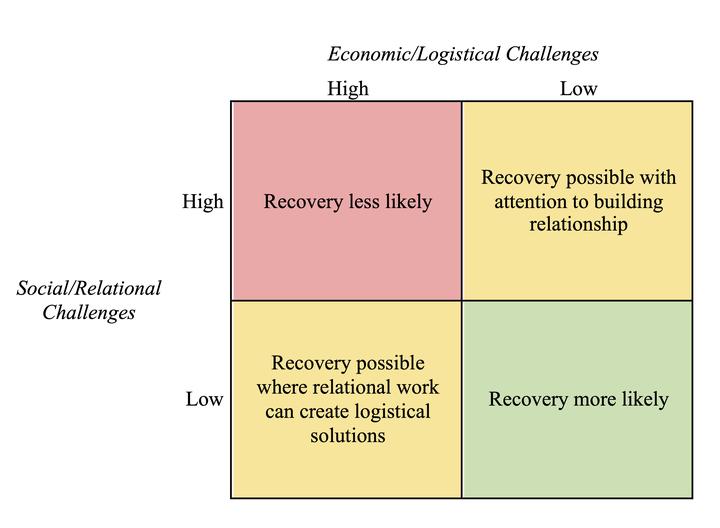Relational and Logistical Dimensions of Agricultural Food Recovery: Evidence from California Growers and Recovery Organizations
 Figure 1: Typology of the likelihood of agricultural food recovery in different contexts
Figure 1: Typology of the likelihood of agricultural food recovery in different contexts
Abstract
Efforts to recover on-farm food losses by emergency food organizations or businesses serving secondary markets have been promoted as a “win–win” solution to both food waste and hunger. We examined what it will take to realize this potential, drawing on interviews with 35 fresh produce growers and 15 representatives from food recovery organizations in California. By taking grower constraints seriously and identifying key dynamics in their relationships with food recovery partners, we provide a textured account of the relevant logistical and relational challenges and promising solutions. Our research makes three specific contributions: (1) providing a straightforward conceptual rubric to clarify when food recovery partnerships are likely to be more or less difficult to achieve; (2) highlighting key relational strategies or approaches that make success more likely, even if logistical barriers appear daunting; and (3) emphasizing the dynamic, developmental, and context-specific nature of recovery partnerships, such that “what works” will necessarily change over time and across different settings. Based on our analysis, successful partnerships require investments of time and attention that are in short supply, but necessary to establish and sustain recovery relationships. The path forward appears less rosy than presumed by those who focus on statistics suggesting a large recovery potential, but also more promising than presumed by those who see the structural challenges (both economic/logistical and social/relational) as inherently insurmountable.
Slide deck from the American Sociological Association Annual Meeting (August 8, 2020):